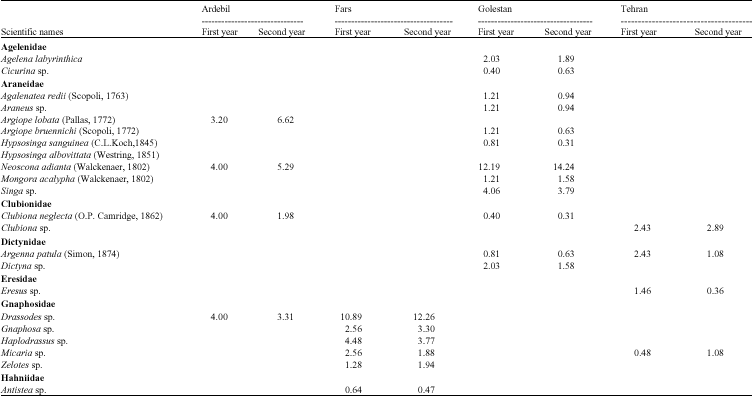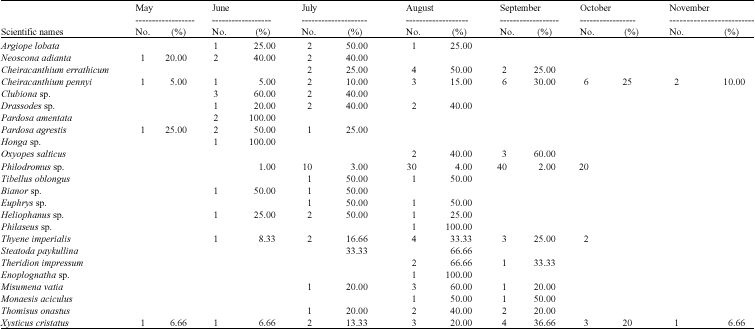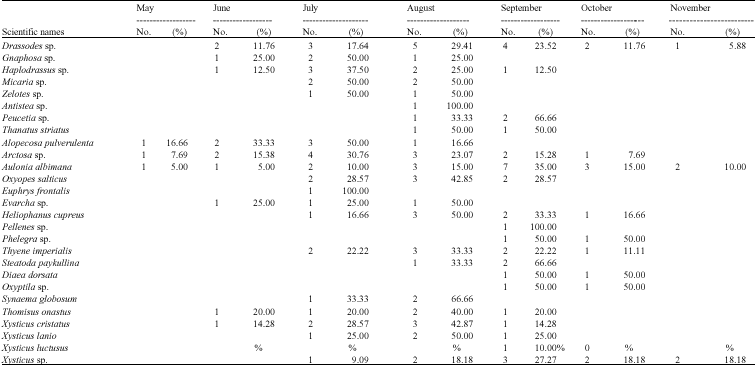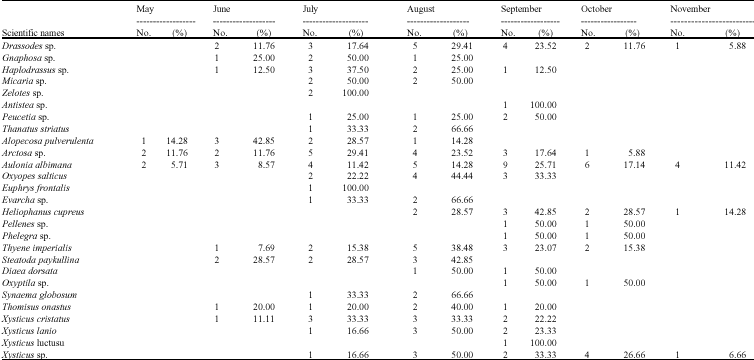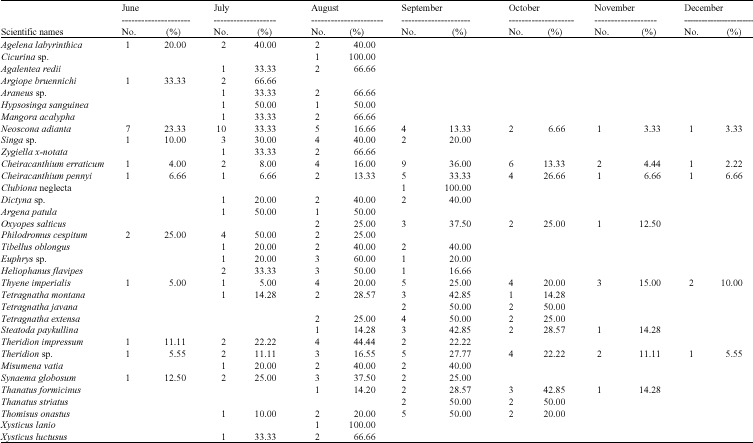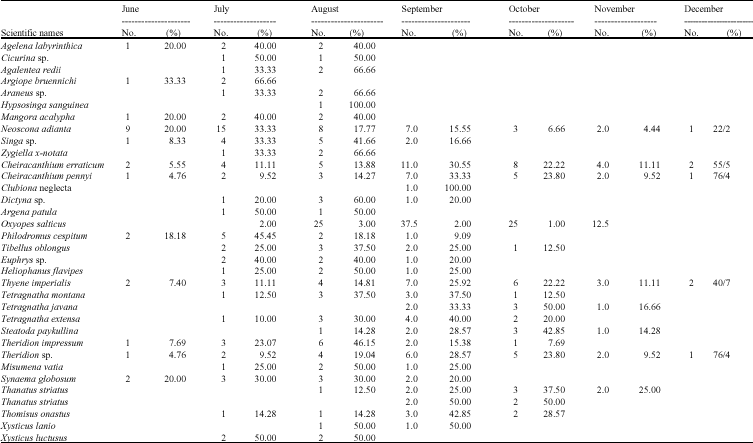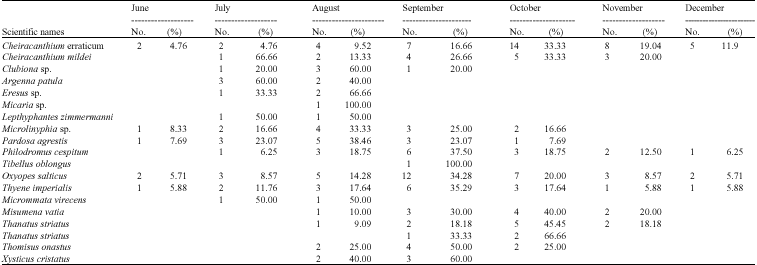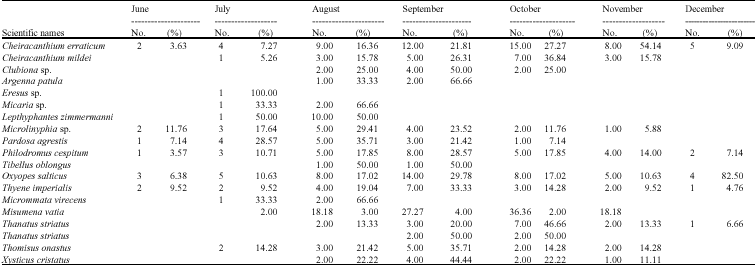Research Article
Investigation of Abundance and Determination of Dominant Species of Spider Species in Iranian Cotton Fields
Araneology Research Laboratory, Department of Agriculture Zoology Research, Iranian Research Institute of Plant Protection, Tehran, Iran
Gholam Ali Amin
Agriculture Center of Fars,Cotton Research Institute, Iran
Masood Taghizadeh
Agriculture Center of Ardebil, Cotton Research Institute, Iran
Zakaria Karimian
Cotton Research Institute, Iran









